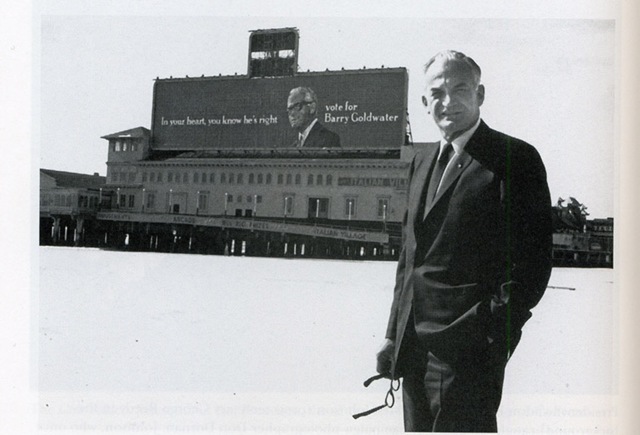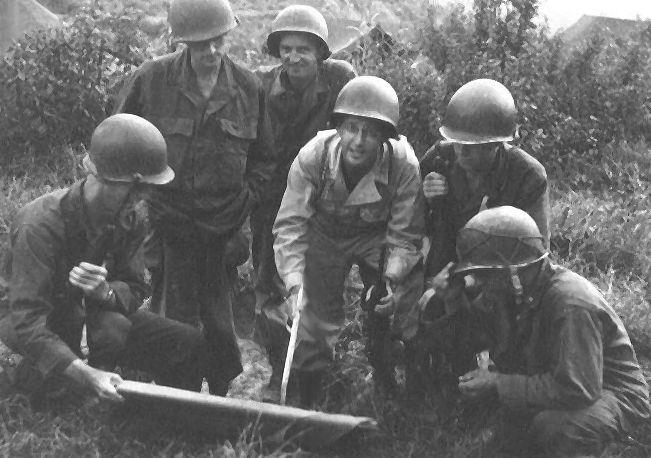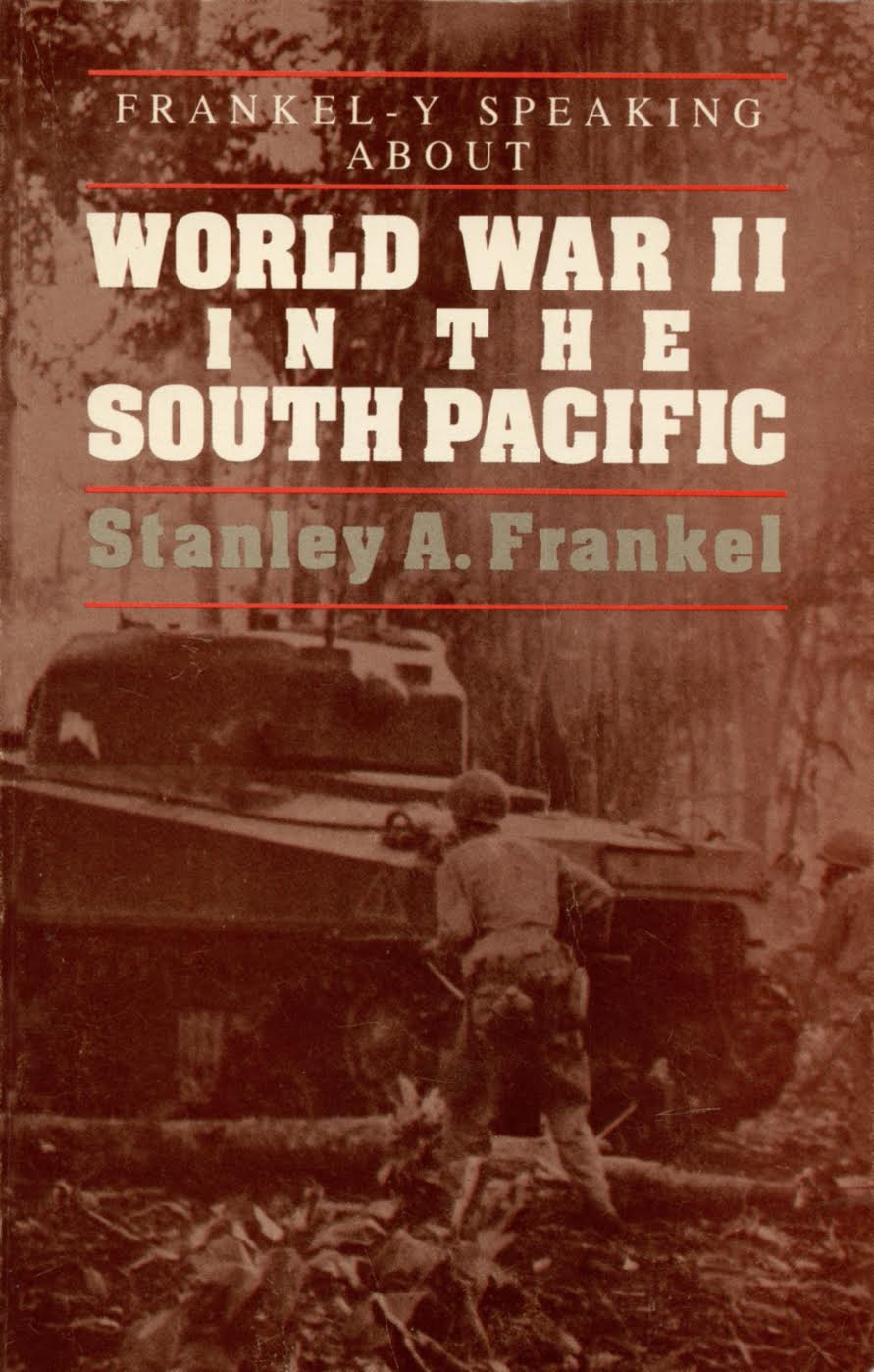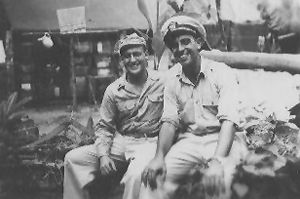Stanley A. Frankel
(1919-1999)
Stanley Frankel was a veteran who served in World War Two from 1941-1946 and had recounted his experiences in a full biography, called Frankel-Y Speaking. This site contains the full biography, separated in each chapter as seen below. Since fighting in World War II, he has written several pieces and has given many talks and lectures. This site also contains some of Mr. Frankel's other works and links to the essays he has written.
Read Stanley Frankel's Collection of Papers HereIntroduction, Acknowledgment, and Dedication from Stanley A. Frankel
I was drafted into the U. S. Army on January 23, 1941, ten months before our nation entered World War II. I was assigned to the 37th Ohio National Guard Division. A very reluctant soldier, I believed, as did most of those drafted with me, that I would serve no more than twelve months. Five years and five major battles later I was discharged with the rank of major.
Like most American men in my generation I was not brought up to be a soldier. My first twenty- three years ill- prepared me to be plunked down as a World War II infantryman for three and one- half years– in the dank jungles of the Solomon Islands, in the lethal streets and buildings of Manila and on the frightening, winding mountain roads leading up to Baguio in the Philippines. Those who knew me in Dayton, Ohio, where I grew up, and at Northwestern University where I led student rallies calling for non- participation in the war in Europe, surely would have thought it wildly unlikely that I would become an officer in the U. S. Army in the South Pacific leading troops into battle.
The chapters in this book are my own personal account of what might be called ‘‘ Frankel’s War. ’’ They are based on recollections and materials written at the time. Many of the chapters are accounts in the form of letters drafted immediately after combat ceased, red hot on a borrowed typewriter, and sent to a ‘‘ Dear Aunt Madeleine’’ in New York City. Aunt Madeleine was really Ms. Madeleine Brennan, a top literary agent, who had been persuaded by my father- in- law to be, Salem Baskin, to read and, if warranted, try to sell what I had sent her. Some of these she managed to get published; the balance have been in my files for all these years, carbons on onion- skin paper of the originals I had sent to ‘‘ Aunt Madeleine. ’’
Then there were personal letters. During my entire service my college sweetheart and almost- fiancee, Irene Baskin, to whom I had given my fraternity pin and Phi Beta Kappa key, wrote me every other day, and I responded faithfully and regularly. These letters to her, exactly 1232 of them, she kept in looseleaf notebooks and presented to me on my return from the Pacific in January 1946. (We were married February 20, 1946.) Rereading these letters 45- 50 years later called to mind many hundreds of half- forgotten incidents and triggered some of the materials that follow.
Those of you familiar with the ways of the army in World War II may wonder how I managed to send materials like those to ‘‘ Aunt Madeleine’’ to the States uncensored. At first I had few problems. All outgoing mail written by enlisted men was censored by their immediate commanding officer (quite an inhibitor to the love- and- action comments of the soldiers). Letters from officers were censored in random fashion by the Army Post Office in the field, the usual hit- or- miss affair resulting in few hits and many misses.
For a long while all my letters got through, untouched. Eventually, however, when some of my stuff started being published in the States in newspapers and national magazines, clippings would often be relayed by the loved ones back home to the Commanding General, Colonels and others.
Articles intended for publication were supposed to be submitted to the Division G2, a procedure I had not wanted to risk because of my apprehension that I would be denied permission. When the top brass did get wind of my publications, they did not make an issue with me about my breach of army regulations. But thereafter the Division Post Office examined every Frankel letter carefully. Irene began to receive V- Mail with words and sentences clipped out. One, she recalls, had a sentence beginning: ‘‘ I am on an . . . (next word scissored out). ’’ It didn’t take her too long to fill in the missing ‘‘ island. ’’ Later, after I found out I was being censored, I resorted to some tricks to slip out information. Once, trying to let her know where I was, I asked her repeatedly about a ‘‘ mutual friend, Helen. ’’ Irene wrote back, ‘‘ which Helen? ’’ I then replied, ‘‘ The Helen who was a sorority sister of yours at Northwestern. ’’ She answered, ‘‘ Do you mean Helen Goldberg or Helen Solomon? ’’ And she further wanted to know why I had suddenly envinced an interest in them, since we had not been particularly friendly with either. I reacted: ‘‘ No, not Helen Goldberg. The one I really want you to concentrate on is the other Helen. ’’ At that, Irene figured it out that I was trying to tell her we were in the Solomon Islands.
In addition to the letters to Madeleine Brennan and to Irene, I had my diary, which triggered many memories. Keeping a diary was forbidden, but I had kept one nevertheless, in my back pocket during combat, hidden in my footlocker between missions. This diary served as the source of several of these chapters.
A number of friends encouraged . . . hell . . . pressured me to dust off the keys of my Royal 400 and bang out this volume. Dr. Marc Hollender, my old and dear buddy, wrote, phoned, and needled me at least once every month for 20 years to put this on paper. My new friend, Dr. Patrick Quinn, Northwestern University archivist, read my papers and urged me to go public with my World War II experiences. My Scarsdale neighbor and old friend, Dr. Rowland Mitchell, edited, rewrote, and guided the direction and the content of this whole manuscript.
And then, of course, there were so many of my compatriots who acted on the often bloody stage on which we fought. I cannot mention all of their names here but I must list some of those who never returned to read this: Bob Richter, killed in Malacanan Palace in Manila just as I ran out to order him to come inside; Warrant Officer Sayre Shulters, hit by Japanese artillery in the same Manila bombardment; famed Private Rodger Young who gave up his life in New Georgia to save 20 men of his patrol; Lieutenant Bob Viale, who fell on a hand grenade in Manila to keep it from getting 10 soldiers in his platoon; Lieutenant Bob Harley, hit by a mortar shell in New Georgia while he and I were eating C rations at dusk; Al ‘‘ Shorty’’ Gold, fleet center fielder on my regimental baseball team who could not outrun a Japanese mortar shell in Manila; Lieutenant Bob Hollomon, whom I trained on the Canal with other reinforcements and who was gunned down by an enemy machine gun on the outskirts of Manila . . . and on and on. These dear, courageous friends and comrades gave that ‘‘ last, full measure of devotion’’ not only to their country but to their fellow soldiers and me. I would hope that their wives, families, children will read this book and know they are not forgotten; that they have achieved a kind of immortality in these short and insufficient lines. I only wish that these words would never have had to be inscribed.
At war’s end I was assigned to write the History of the 37th Division using as sources the records written by hundreds of officers and men of the Division. A 400 page volume, it recounts rather straight- forwardly the Division’s experiences in training, in combat and in the long interludes between battles. Although I am listed as author, the 40,000 men who served in the Division really wrote that History.
This more personal account is mine alone. I dedicate this effort to Irene who suffered through those difficult war years, and who has given me the love, encouragement, and devotion which has enriched and fulfilled my own life. To my three beloved children, Stephen, Thomas and Nancy and her husband, Henry Joselson, our new son, this book is also dedicated. And, finally, it is dedicated to my grandson Adam, in the hope and prayer that what happened to me and my generation will never, never, never happen to Adam and his.
Articles
-

Pre-CHOICE (1964): The Billboard Prank
December 8th, 2016It began as a master stroke of in-your-face campaigning: The Republicans rented space on Atlantic City’s largest billboard just in time for the nomina
-

New York Times Obituary- Stanley Frankel, 80, Writer and Corporate Officer
Stanley Frankel, a journalist, corporate executive and speechwriter for Democratic presidential candidates, including Adlai E. Stevenson, Robert F. Ke


